
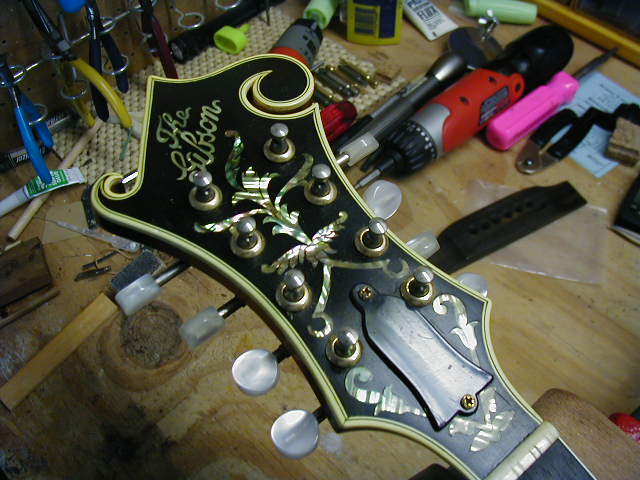
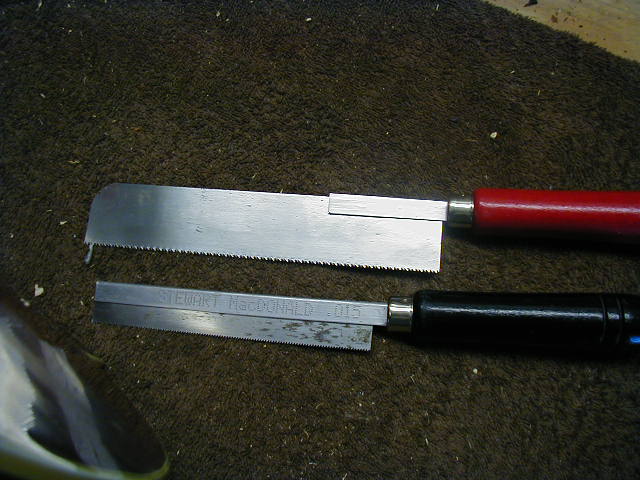
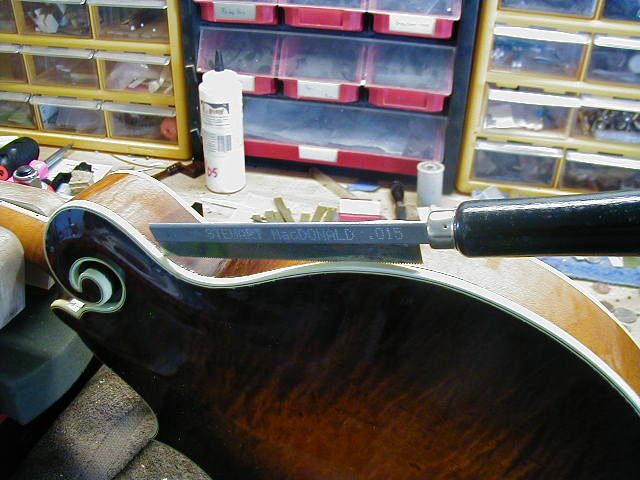
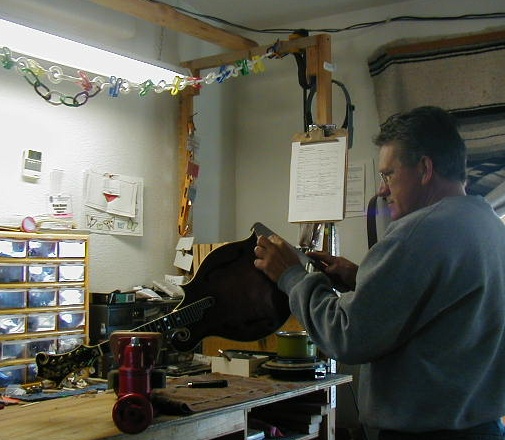
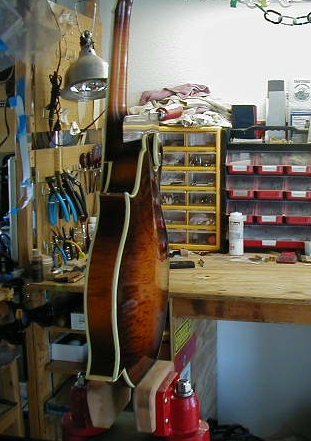
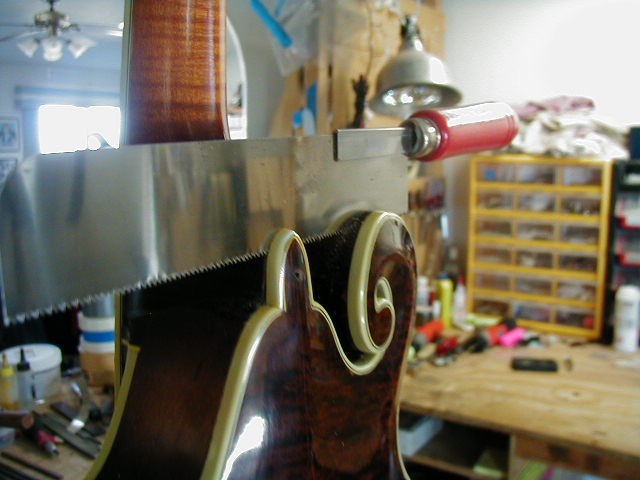
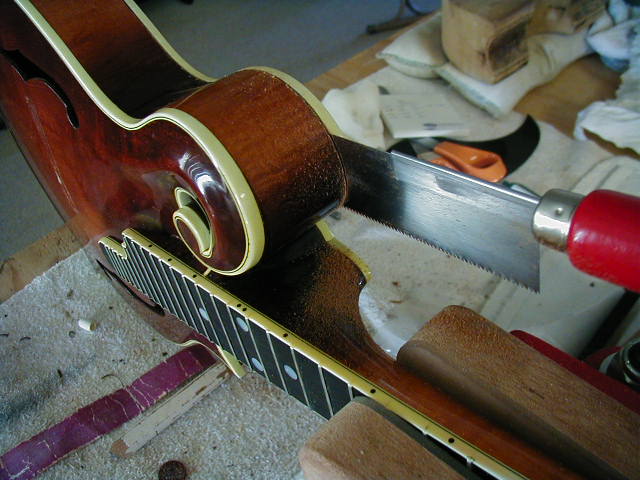
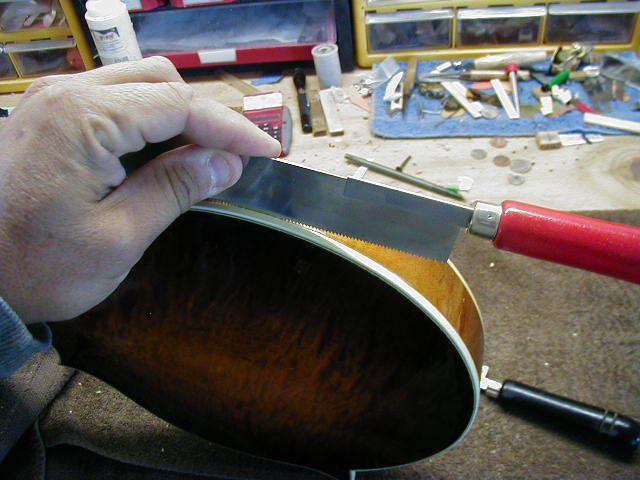
Putting Tone Bars in a Mandolin
Now this was a fun project...we've got an F5 mandolin on which someone, somehow, scraped out the tone bars. They might've thought they were loosening the top up, but tone bars are critical to mandolin sound production. This isn't a particularly valuable mandolin (thus, me. <g>) so after studying the problem and talking to various people, including Daryl Wolfe at the F5 Journal, I decided to cut the back off the mandolin. This would solve the problem of rebinding the mandolin and done right, should work well. Here we go!
 |
First of all, some shots of the patient. This is actually an "after" shot, but we don't have to know that. <g> |
 |
Here's a shot of the headstock. Says "Gibson", but it's not, as we'll soon see. |
 |
These are two of the saws I used for this operation. The top saw is a pull saw with a very flexible blade. The bottom is a stiff-backed saw from Stewart MacDonald. Both saws were .015" thick. |
 |
First thing I did was go around the entire mandolin (best as I could- some of those curves are tight) with the stiff saw. I was just getting a feel for the saw, scoring and making a very shallow guide cut in preparation for the deeper cut coming up. |
 |
I found the Stew Mac vise almost invaluable for this work as it let me put the mandolin at all kinds of crazy angles. |
 |
More of the vise in action. The vise has urethane lined jaws that do an excellent job of gripping the mandolin. |
 |
Any time I could bridge two points, I did so. This helped keep the saw straight and the cuts in line. Here I'm bridging the scroll and heel and cutting both at the same time. The scroll cut doesn't follow the binding- there's a "spacer" on the scroll and the cut actually separates this spacer from the body. |
|
|
Another example of making a "two-point" cut. |
 |
I'm using the flush-cut saw here to go "all the way" and really get the saw in there. |
 |
Instead of holding the saw by the handle, I often held it like this. This let me apply a little more down-pressure right on the teeth w/out the saw wanting to whiplash out of the way. This was especially useful when making the initial score. |
Removing the mandolin back, Page 2